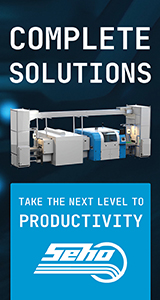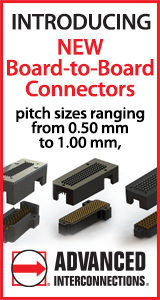|

|
|
| Ask the Experts | |||||||
|
|||||||
|
June 9, 2008 - Updated June 9, 2008 - Originally Posted Bake Tape and Reel ComponentsAt what temperature and for what length of time should moisture sensitive tape and reel components be baked to ensure no damage is done to the tape or real? B.C. |
|||||||
| Expert Panel Responses | |||||||
|
I am assuming that you are using common commercial tapes and reels. These can not withstand the commonly used 125 C baking temperatures that are listed are listed in IPC/JEDEC J-Std-033B. The most frequently used drying approach is to:
Director of Engineering Innovative Drying Co. Mr. Leech lead a successful 2 year long process development effort that identified the parameters required to rapidly dry moisture sensitive devices while they were encased in the tape and reel format. Mr. Leech has over thirty years of experience as a manufacturing engineering manager in the electronics industry.
NOTE: Mr. Leech is no longer working at Innovative Drying Co. The recommended bake temperature for components in Tape and Reel is 40C. If you use a bake temperature higher than that, the cover tape and other elements of the packaging will degrade to the point that it becomes impossible to reliably use an automated tape feeder afterwards. To determine the required bake duration for your specific application, refer to the industry standard for use and handling of Moisture Sensitive Devices, IPC/JEDEC Joint Standard 033B.1. Table 4-1 of this standard provides " Reference Conditions for Drying Mounted or Unmounted SMD Packages." Table 4-1 illustrates that required bake duration is dependent on the following variables:
Sales Manager (Americas) Cogiscan, Inc. Mitch DeCaire, Sales Manager at Cogiscan, has served the electronics manufacturing industry since 1989. His prior experiences include process engineering, business development, and engineering management roles with Nortel Networks, Vansco Electronics, Universal Instruments and Siemens.
Please refer to IPC-JEDEC 033 from IPC or a pdf from MagnaB Eurostat. Also, for further enlightenment on MSD, take a look at Cogiscan's website as it is an excellent clearinghouse for articles on the subject.
Principal Consultant ITM Consulting Mr. Zarrow has been involved with PCB assembly for more than thirty years. He is recognized for his expertise in troubleshooting SMT manufacturing and lead-free implementation. He has extensive hands-on experience with set-up and troubleshooting through-hole and SMT processes throughout the world.
|
|||||||
| Submit A Comment | |||||||
|
Comments are reviewed prior to posting. You must include your full name to have your comments posted. We will not post your email address. |
|
Free Newsletter Subscription
Circuitnet is built for professionals who bear the responsibility of looking ahead, imagining the future, and preparing for it. Insert Your Email Address |
|

|




